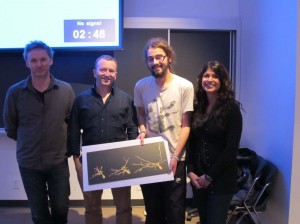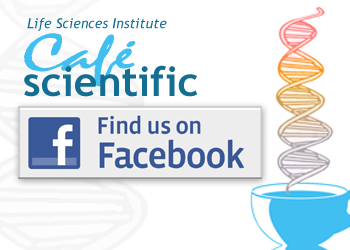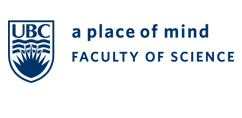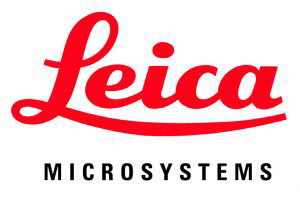 On November 21, 2011, the Life Sciences Institute (LSI) at the University of British Columbia hosted the 8th LSI Café Scientifique. A record number of over 60 interested community members, students and faculty gathered for an informal and participatory dialogue with LSI experts for the first session of the “Seeing Is Believing” series. The particular topic of the session was “Imaging the Developing and Aging Brain”.
On November 21, 2011, the Life Sciences Institute (LSI) at the University of British Columbia hosted the 8th LSI Café Scientifique. A record number of over 60 interested community members, students and faculty gathered for an informal and participatory dialogue with LSI experts for the first session of the “Seeing Is Believing” series. The particular topic of the session was “Imaging the Developing and Aging Brain”.
The Café featured members of the Cell and Developmental Biology Research Group and the Brain Research Centre who discussed state-of-the-art imaging and genetic technologies and how these are being used to understand how brain networks form and function. The interactive session was presented by Drs. Kurt Haas, Shernaz Bamji and Douglas Allan, all from the Department of Cellular and Physiological Sciences.
Dr. Kurt Haas started the presentation with a brief introduction to neuroscience research and how innovations in imaging technologies have enabled us to peer into the living brain. He discussed his own research using direct imaging of the growth of neurons in the developing brain of tadpoles. Dr. Haas showed movies of these cells dynamically extending and retracting branches as they seek other cells to form neural circuits. He discussed the complexities of this process and how errors in brain cell growth and connectivity can lead to common neurodevelopmental disorders like Autism, Schizophrenia, and Epilepsy.
Dr. Shernaz Bamji discussed how nerve cells communicate at specialized junctions called  “synapses” and how advances in imaging and cell culture technologies have enabled researchers to track the movement of proteins and to watch as synapses form and function. She further discussed how altering the state of adhesion at synapses could lead to abnormalities in learning and memory that may underlie disorders such as Huntington’s and Alzheimer’s diseases.
“synapses” and how advances in imaging and cell culture technologies have enabled researchers to track the movement of proteins and to watch as synapses form and function. She further discussed how altering the state of adhesion at synapses could lead to abnormalities in learning and memory that may underlie disorders such as Huntington’s and Alzheimer’s diseases.
Dr. Douglas Allan gave an overview of recent advances in molecular genetic technologies that are used to image and manipulate gene expression in select populations of neurons in the brain. He discussed the techniques of transgenesis, and showed how DNA that had previously been known as junk DNA is in fact used to regulate gene expression and can be used to express fluorescent proteins in specific types of neurons. Finally, he discussed the use of multiple fluorescent proteins and DNA-manipulating enzymes to generate multi-coloured neuronal tissues that can be used to map brain circuits.
A mounted image entitled “Growth of a Brain Neuron”, supplied by Dr. Haas, was given away as the door prize to a member of the audience.
 The LSI Café Scientifique is co-sponsored by the Life Sciences Institute (LSI), Michael Smith Foundation for Health Research (MSFHR), Faculty of Medicine Research Office, Faculty of Science, Leica Microsystems, Systems for Research and Café Perugia (UBC Food Services).
The LSI Café Scientifique is co-sponsored by the Life Sciences Institute (LSI), Michael Smith Foundation for Health Research (MSFHR), Faculty of Medicine Research Office, Faculty of Science, Leica Microsystems, Systems for Research and Café Perugia (UBC Food Services).
The next Café Scientific that will continue the “Seeing is Believing” series will take place in early 2012.
To view more pictures from the event, please visit our facebook page.
Seeing is Believing by Dr. Kurt Haas
Seeing is believing by Dr. Shernaz Bamji
Seeing is believing by Dr. Doug Allan








